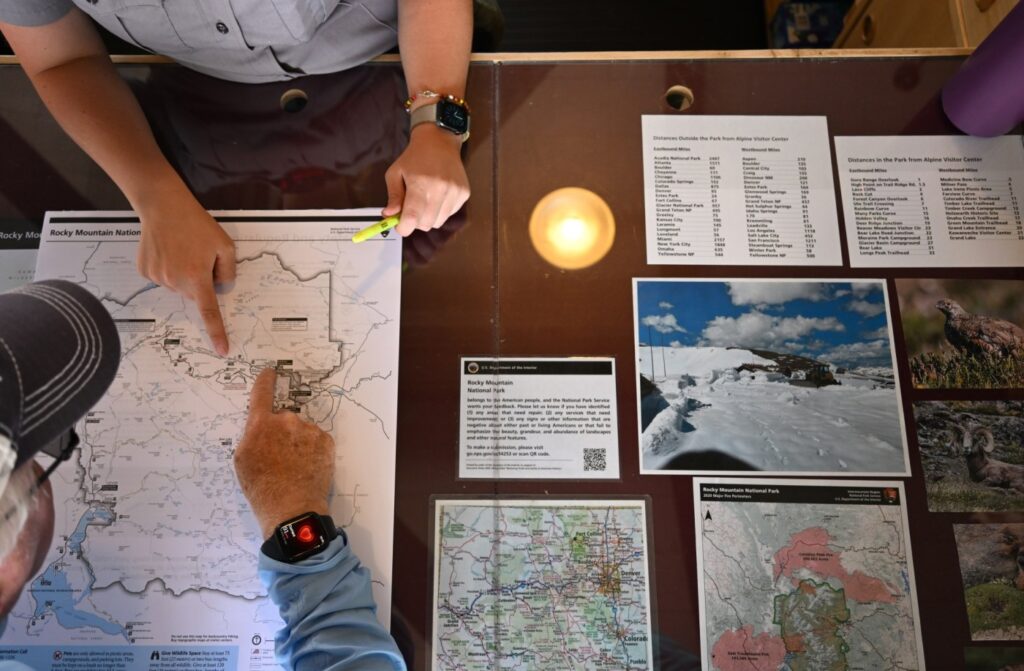
Rick Williams, leader of the American Indian group People of the Sacred Land, expressed disbelief upon discovering signs posted at the Sand Creek Massacre National Historic Site in southeastern Colorado. Critics argue these signs threaten to whitewash history. The signs, mandated by Interior Secretary Doug Bergum on June 13, appear at all National Park Service sites, initially asking visitors to download a QR code and answer survey questions. The third question, however, has sparked concern: it asks visitors to identify “signs or other information that are negative about either past or living Americans or that fail to emphasize the beauty, grandeur, and abundance of landscapes and other natural features.”
Williams, whose organization includes Native leaders and citizens advocating for truthful historical narratives, was particularly alarmed. “I was a little horrified, but I was scared, too,” said Williams, who is of Oglala Lakota and Cheyenne descent. “This essentially gives the average citizen a license to determine what they believe the truth is, potentially leading to hostility over differing viewpoints.”
Historical Sites and Their Stories
The signs have also upset Japanese Americans, particularly at the Amache National Historic Site, another location in southeastern Colorado. Amache was a Japanese internment camp during World War II. Kirsten Leong, vice president of the non-profit Amache Alliance and a fourth-generation Japanese American, expressed concern. “The way they are written seems more applicable to larger national parks focused on natural beauty,” Leong said. “That’s not the congressional purpose of places like Amache. The purpose is to tell these hard historical stories.”
Amache was one of 10 internment camps established by the War Relocation Authority during World War II, incarcerating over 10,000 people, mostly U.S. citizens, from 1942 to 1945. At Sand Creek, U.S. troops killed 230 Cheyenne and Arapaho people in 1864, mostly women, children, and the elderly.
Political Context and Reactions
Bergum’s order, issued on May 20, followed an executive order by former President Trump titled “Restoring Truth and Sanity to American History.” Trump criticized efforts to “rewrite” history, claiming they replace objective facts with ideologically driven narratives. He emphasized the nation’s legacy of liberty and individual rights, arguing against portrayals of it as inherently flawed.
The order instructs land management bureaus, including the National Park Service, to identify monuments and markers that “inappropriately disparage Americans” or fail to highlight natural beauty. Kyle Patterson, public affairs officer at Rocky Mountain National Park, noted the signs are placed in accessible locations like visitor centers and trailheads. Sierra Willoughby, public information officer at Great Sand Dunes National Park, stated the signs emphasize the importance of accuracy in storytelling.
Funding Concerns and Visitor Feedback
Many park visitors have used the surveys to call for increased funding. Advocates argue that national parks were underfunded even before Trump’s presidency. The National Park Service faces a nationwide backlog of deferred maintenance estimated at nearly $23 billion. Trump’s 2026 budget proposes $900 million in cuts, which the National Parks Conservation Association calls “the most extreme, unrealistic and destructive” in the agency’s history.
“This is an all-out assault on America’s national parks,” said NPCA chief executive Theresa Pierno.
Estee Rivera Murdock, executive director of the Rocky Mountain Conservancy, noted that visitor feedback consistently highlights inadequate funding. “Visitors love these places, but they need more funding and rangers,” Murdock said. “It’s challenging to solicit feedback for changes without the resources to implement them.”
Implications for Historical Sites
With potential budget cuts, there are fears that lesser-visited sites like Amache and Sand Creek could close. Rocky Mountain National Park attracts 4 million visitors annually, while Amache and Sand Creek see far fewer. Dawn DiPrince, chief executive of History Colorado, stressed the importance of evidence-based history and expressed concern over funding cuts. “These parks weren’t created just for visitation numbers,” DiPrince said. “They exist to tell important American history, and it’s problematic to threaten their existence based on budgetary cuts.”
Williams remains hopeful about the Sand Creek site’s future, emphasizing its sacred significance to Native Americans. “Of those 6,400 visitors, probably 6,000 were American Indians,” Williams said. “They’ll visit whether it’s a national park or not.”







